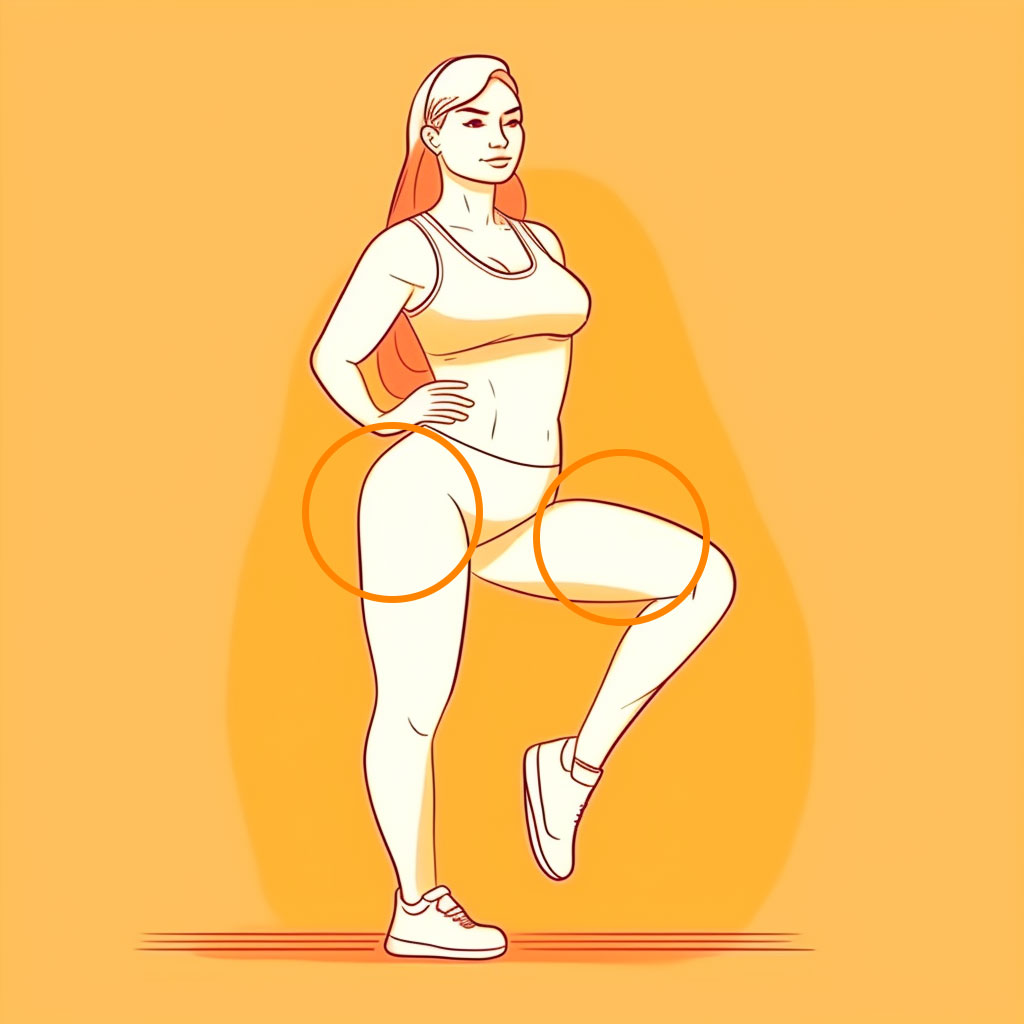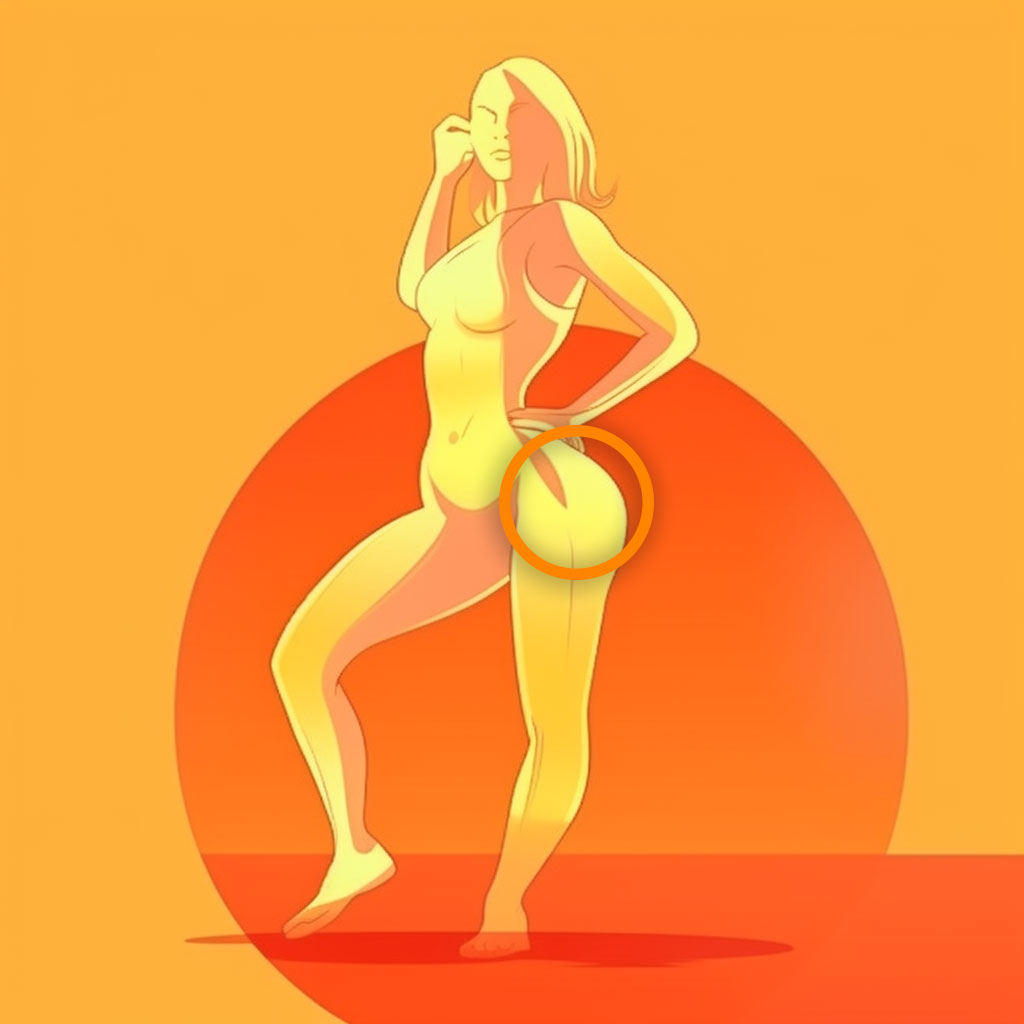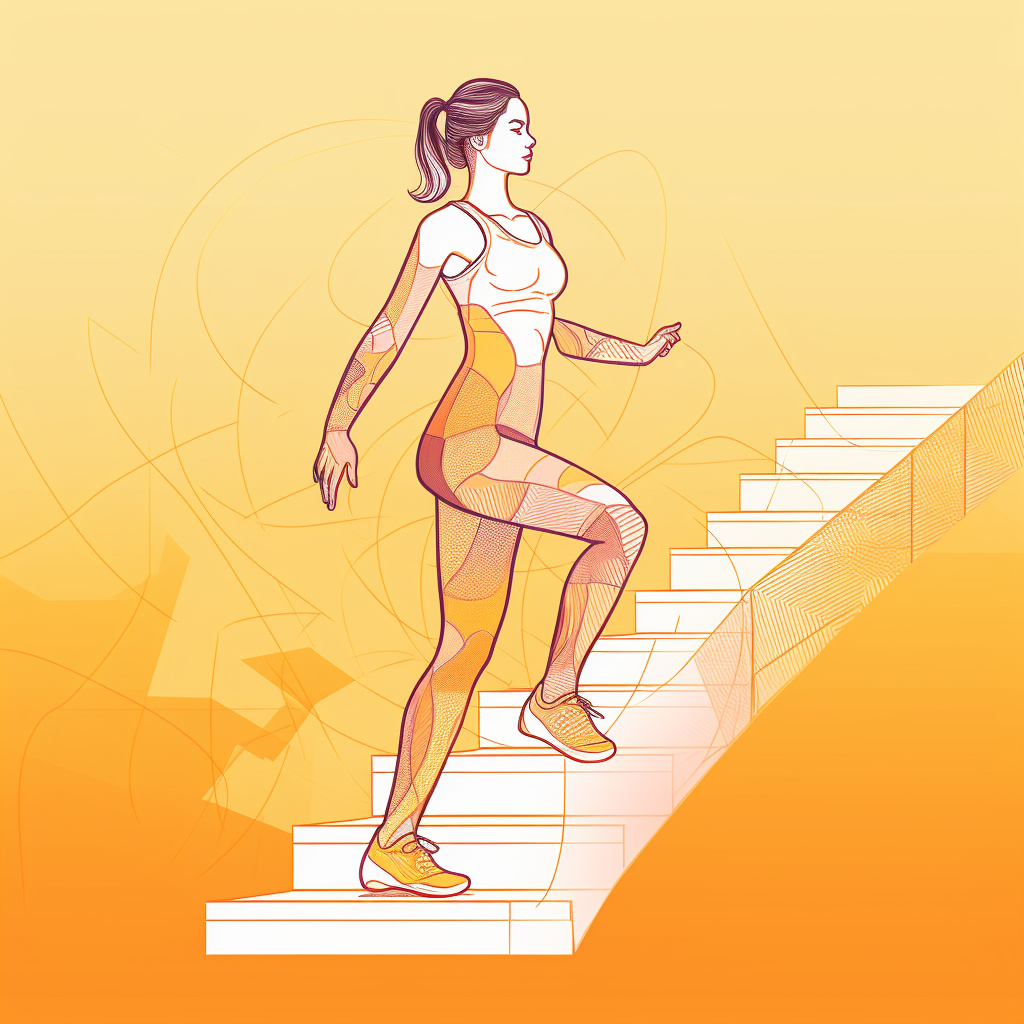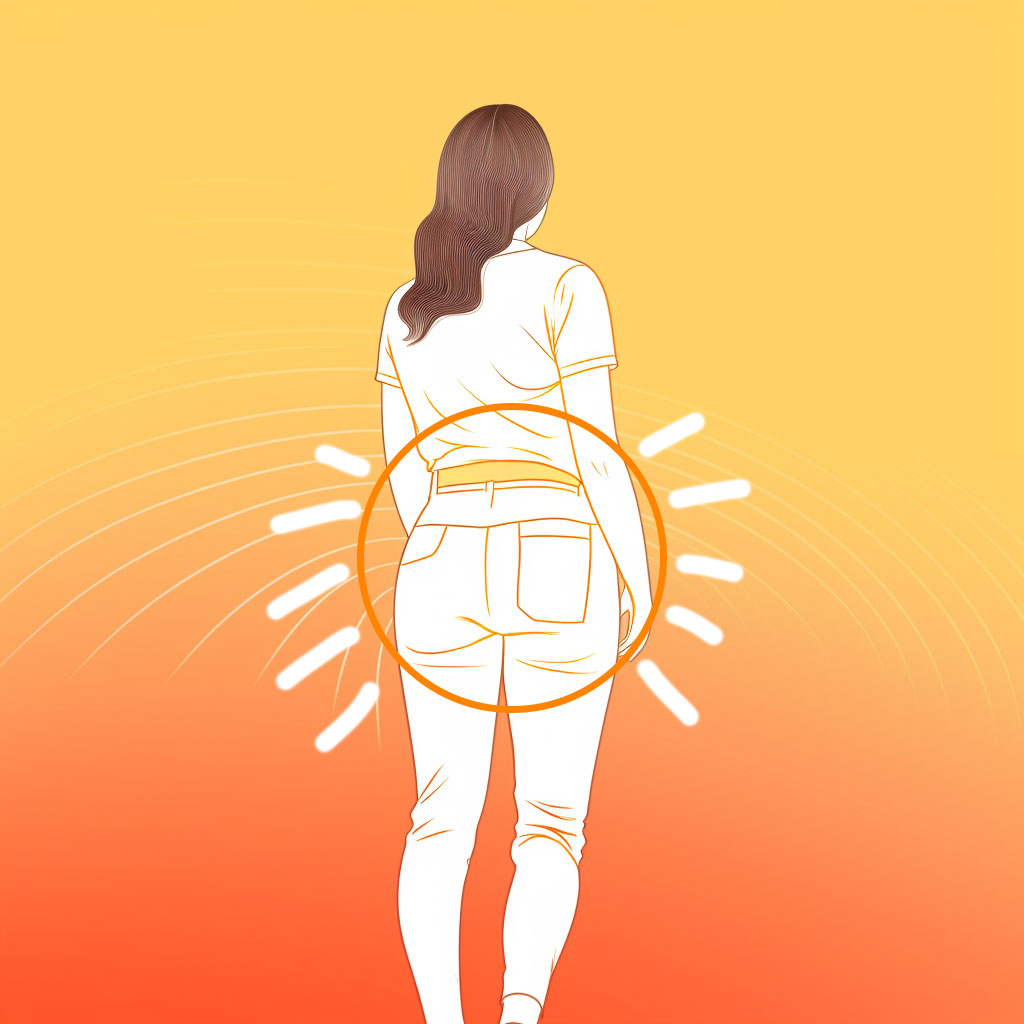Let’s face it, when it comes to lower body training, there’s a constant battle between which muscle group deserves more attention: the quadriceps or the glutes?
In this article, we’ll dive deep into the world of quad vs glute training and discover the best approach for achieving well-rounded, powerful legs that will leave you feeling strong and confident.

Now before you start thinking that you must choose between team quads or team glutes, let me tell you – it’s not that simple.
Both of these powerhouse muscle groups play crucial roles in our daily lives and athletic performance. They’re responsible for functions like walking, running, jumping, squatting and so much more.
So rather than pitting them against each other in some epic showdown of leg day domination, let’s explore how to effectively train both your quads and glutes to maximize their potential and transform your lower body into an unstoppable force.
Anatomy and Functions of Quadriceps
Let’s dive deeper into the anatomy and functions of quadriceps, one of the most powerful and largest muscle groups in our body.
The quadriceps, or ‘quads’ for short, comprise four major muscles located at the front of your thigh.
These muscles are rectus femoris, vastus lateralis, vastus medialis, and vastus intermedius.

The primary function of the quads is to extend or straighten the knee joint.
This action is crucial for activities like walking, running, jumping, squatting, and even standing up from a seated position.
Additionally, quads play a vital role in stabilizing the knee during movement and maintaining overall balance.
Knee flexion is primarily controlled by another powerful muscle group – hamstrings. However, one quad muscle – rectus femoris – also participates in hip flexion due to its attachment to both hip bone and knee joint.
This unique feature makes it essential for proper glute muscle activation during various exercises targeting both quads and glutes simultaneously such as lunges or step-ups.
Although quad-dominant exercises like leg extensions may not directly involve glute activation as much as more compound movements like squats or deadlifts do; it’s important to remember that strong quads are still necessary for optimal performance in these glute exercises too.
With a clear understanding of how quadriceps work hand-in-hand with other leg muscles like hamstrings and glutes now established; let’s take an even closer look at the anatomy and functions of another critical component for lower body strength: Glutes!
Anatomy and Functions of Glutes
It’s often overlooked, almost like a well-kept secret. Yet, it can be the key to unlocking your true potential when it comes to athletic performance and injury prevention.
That powerful hidden gem is none other than your glutes – the muscles responsible for powering many of your lower body movements.

In this section, we’ll dive deep into the anatomy and functions of these critical muscles and how you can maximize their activation during exercise.
- Gluteus Maximus
- Gluteus Medius
- Gluteus Minimus
- Tensor Fasciae Latae
These four muscles work together to control the movement of your hips and thighs, providing stability to your lower back and pelvis during various activities such as walking, running, or squatting.
Proper glute recruitment is essential for optimal performance in sports and fitness training because it helps distribute forces across multiple joints and reduces stress on other muscle groups like the quadriceps.
To enhance gluteal muscle activity, incorporating glute accessory exercises that specifically target these muscles is crucial for overall strength development and injury prevention.
Harnessing the power of your glutes involves not only strengthening them but also ensuring proper activation during specific movements seen in quad-dominant exercises like squats, lunges, or deadlifts.
Ensuring optimal glute activation will help prevent overuse injuries commonly seen in athletes with weak or underdeveloped glutes who may compensate by relying more heavily on their quadriceps.
Mastering glute recruitment techniques will lead you to unlock new heights in athletic performance while simultaneously reducing injury risk from quad dominance issues that may arise due to muscular imbalances between these two critical muscle groups.
Now that we’ve covered the importance of understanding the anatomy and functions of your glutes let’s delve into quad dominance as an issue faced by many athletes today…
Quad Dominance
Quad dominance is an imbalance between the quadriceps and glutes which can lead to weak glutes and increase the risk of injury.
To prevent injury and to improve strength, training should be focused on strengthening the glutes and balancing the muscles of the lower body.
I recommend focusing on exercises that work both the quads and the glutes to promote symmetry and stability.
Doing so will help to maximize your strength and minimize risk of injury.
One key aspect of addressing quad dominance is incorporating specific types of exercises into your routine that focus on activating the glutes.
These include exercises such as hip thrusts and glute bridges.
Here is how these two exercises look like:
By prioritizing these movements in your training program, you’ll effectively engage your glutes, helping to correct any muscle imbalances and improve overall lower body strength.
By focusing on engaging your glutes throughout lower body exercises, you’ll ensure they are working in harmony with your quads rather than allowing one muscle group to dominate the other.
Remember that achieving balance between quad and glute strength is crucial for optimal performance and minimizing the risk of injury in all types of athletic endeavors.
So go ahead — give those glutes some love!
Imbalance
Imbalance between quads and glutes can result in inefficient movement patterns, overuse injuries, and even chronic pain.
This often occurs because tight hip flexors and underactive glutes force the quadriceps to compensate and work harder than they should during various movements.
To prevent or correct these imbalances, it’s essential to incorporate both glute activation exercises and targeted quad exercises into your training program.
By doing so, you’ll effectively engage each muscle group in the posterior chain, ensuring optimal lower body strength and stability.
Remember that a well-rounded approach to lower body training will not only help you achieve balanced muscular development but also reduce the risk of injury caused by muscle imbalances.
So next time you hit the gym or plan your workout routine, make sure to include a mix of both quad-focused movements like squats, lunges, and leg presses along with glute-targeted exercises such as hip thrusts, bridges, and clamshells.
This balanced approach will ensure that both your quads and glutes are working together efficiently for more effective overall performance in all aspects of physical activity.
Glute Dominance

When it comes to glute dominance, it’s important to focus on glute activation and strengthening exercises.
Activating the glutes prior to exercise allows you to use them effectively, while strengthening exercises will help build strength and endurance.
Glute activation exercises specifically target the muscles in your posterior chain, ensuring they’re firing properly during your workout.
This is crucial for achieving glute dominance, which means that your glutes are the primary muscles being engaged and strengthened during lower body exercises.
Inactive glutes can result in overcompensation from other muscle groups, like the quadriceps or hamstrings, ultimately hindering your progress and increasing the risk of injury.
One highly effective exercise for promoting glute activation is the glute bridge. This simple yet powerful move targets all three glute muscles while also engaging your core and hamstrings.
- To perform a proper glute bridge, lie on your back with knees bent and feet flat on the floor about hip-width apart.
- Press through your heels as you lift your hips off the ground until there’s a straight line from shoulders to knees.
- Squeeze your glutes at the top position before slowly lowering back down; repeat for desired number of reps.
By incorporating this exercise into your strength training routine, you’ll be well on your way to achieving enviable glute dominance!
Glute strengthening exercises
Now that we understand the importance of glute activation in achieving glute dominance, let’s dive into some effective glute strengthening exercises to further enhance your progress.
Incorporating a variety of exercises that target different aspects of your glutes will help you build a strong and shapely posterior that not only looks great but also provides adequate support and stability during other workouts or daily activities.
Remember, the key to developing well-rounded glute strength is consistency and proper technique.
One excellent addition to your workout routine is the glute bridge march, which takes the basic glute bridge exercise up a notch by incorporating movement and balance.
To perform this move, start in the same position as a standard glute bridge with your hips raised off the ground.
From there, lift one foot off the floor while keeping your hips level, then place it back down before switching to the other foot.
This marching motion engages both sides of your glutes while also challenging your core stability.
Aim for controlled movements, focusing on maintaining proper form and engaging those glutes throughout each rep.
By consistently including these targeted glute strengthening exercises alongside your overall strength training routine, you’ll be well on your way to achieving true glute dominance.
Importance Of Balance Between Quads And Glutes
Having strong quads and glutes is essential for a balanced, healthy body. Let’s cover how to have balance between quads and glutes.
Core strength
The key to unlocking your full potential and improving functional performance lies in core strength.
Core strength is essential for overall body strength and stability.

When you have a strong core, it helps support proper alignment during your quad workout and ensures effective glute activation.
This way, you’re not only building muscle mass but also improving balance and coordination which are crucial for day-to-day activities as well as athletic performance.
Additionally, a strong core reduces the risk of injuries by providing additional support to your spine and helping maintain proper posture.
Incorporating core-strengthening exercises into your routine can truly elevate the results of both your quad workouts and glute activation efforts.
By doing so, you’ll not only improve functional performance but also prevent muscle imbalances that could lead to pain or injury down the line.
So next time you hit the gym or plan out your exercise routine, don’t forget to give some love to your core muscles – they deserve it just as much as those quads and glutes!
Lower back health
Speaking of balance, it’s also crucial to consider the impact of quad and glute strength on lower back health.
As a quad and glute exercise expert, I’ve seen time and again how issues with these muscles can lead to problems in the lower back.
When there’s an imbalance in strength between your quads and glutes, it can cause excessive strain on your lower back muscles.
Glute activation exercises are particularly important for maintaining good lower back health, as weak or underactive glutes can force your lower back to compensate during movements like the bodyweight squat.
A well-rounded quad workout that also targets your glutes can help alleviate some of this strain by ensuring both muscle groups are working together efficiently.
Additionally, engaging your core muscles during these workouts further supports your lower back by providing stability and reducing the likelihood of injury.
So remember, don’t just focus on building those quads and glutes – pay attention to your core and overall balance as well!
Ensuring proper alignment and strength throughout your entire body will not only keep you feeling great but will also contribute to better knee muscle stability and improved overall functional performance.
Injury prevention

Injury prevention is another crucial aspect to consider when discussing the importance of balance between quad and glute strength.
When there’s an imbalance in strength between your quads and glutes, it doesn’t just lead to lower back issues – it can also increase your risk of knee pain, especially if you’re neglecting other factors like ankle mobility.
By focusing on both quad vs glute strengthening exercises, you’ll be able to better protect your knees from injury, ensuring that they stay strong and healthy as you continue to exercise.
Additionally, improving ankle mobility plays a key role in reducing strain on the knees during various movements.
So make sure you’re giving equal attention to all these areas in order to avoid any potential problems down the road.
Overall, maintaining balance between your quads and glutes is essential not just for preventing knee pain but also for promoting overall functional performance.
Common Quad and Glute Imbalances and Their Effects
Weak quads and tight glutes can lead to hip instability, so it’s important to keep them in balance. Working on strengthening the quads and stretching the glutes should help minimize this instability.
I recommend focusing on exercises to target the quads’ muscles, like squats and lunges, as well as glute stretches like the figure four stretch. Incorporating these into a regular routine can help prevent imbalances from developing, and help alleviate existing ones.
Additionally, core work and hip strength exercises are important to keep hip stability in check. Lastly, don’t forget to rest and recover, as this can help prevent imbalances and injuries.
Weak quadriceps
Weak quadriceps are a common muscle imbalance that can lead to poor movement patterns, decreased strength, and increased risk of injury.
Exercises for quads should focus on knee flexion to minimize stress on other muscles and joints.
Closed chain knee exercises, which involve keeping your foot in contact with a surface while moving the rest of your body, are particularly effective for targeting the quadriceps. Examples include squats, lunges, step-ups, and leg presses.
Body weight training is an excellent way to start strengthening your weak quadriceps before progressing to more advanced exercises with added resistance.
Don’t underestimate the power of strong quads—they play a crucial role in supporting proper movement patterns and reducing the risk of injury.
By incorporating targeted exercises into your routine, you can help correct this common imbalance and unlock your true athletic potential.
So go ahead, give those weak quadriceps the attention they deserve!
Tight glutes

Tight glutes can cause discomfort and limit your range of motion, but they also contribute to an issue known as ‘glute dominance.’
This occurs when your glutes become the primary movers during exercises that should engage multiple muscle groups, potentially leading to overuse injuries and decreased overall performance.
To address tightness in the glutes, begin by incorporating dynamic stretches and mobility work into your warm-up routine.
This will help increase blood flow to the area, improve flexibility, and prime the muscles for more intense exercise.
Next, focus on proper glute activation during key movements like squats and lunges to ensure you’re engaging all the right muscles (and not just relying on those powerful glutes!).
Finally, consider adding supplemental exercises specifically designed to target other muscle groups—like your quads—to help balance out any existing imbalances.
Remember that addressing tight glutes is just as important as strengthening weak quadriceps in order to maintain optimal movement patterns and reduce injury risk.
By implementing a thorough glute warm-up routine and incorporating targeted strength training into your workouts, you’ll be well on your way to overcoming this common imbalance and achieving peak athletic performance.
Hip instability
Hip instability can exacerbate both weak quadriceps and tight glutes, making it a critical area to address for optimal performance.
To combat hip instability, we’ll want to focus on exercises that promote glute activation while also improving stability throughout the entire lower body.
One such exercise is single-leg knee flexion movements like Bulgarian split squats or single-leg deadlifts.
Here’s how to do Bulgarian split squats – the right way.
By performing these exercises with only one leg supporting your body weight, you’re forcing your stabilizing muscles—including those in your hips—to work harder, ultimately promoting better balance and control.
Additionally, incorporating functional training exercises like lateral band walks or clamshells can further improve hip stability by specifically targeting the oft-neglected gluteus medius muscle.
By addressing hip instability through targeted exercises and proper glute activation techniques, you’ll not only enhance overall athletic performance but also reduce the risk of injury associated with imbalanced muscle groups.
So be sure to prioritize this crucial aspect of your training regimen moving forward.
Frequently Asked Questions
Finally we will cover some of the frequently asked questions related to this quad vs glute topic…
How can I specifically target and strengthen my quadriceps and glutes without overworking other muscle groups?
To specifically target and strengthen your quadriceps and glutes without overworking other muscle groups, it’s essential to focus on exercises that isolate these areas.
Start by incorporating compound exercises such as squats, lunges, and step-ups into your routine, as these movements engage both the quads and glutes.
Additionally, perform targeted exercises like leg extensions for the quads and glute bridges or hip thrusts for the glutes.
Remember to maintain proper form during each exercise to ensure you’re engaging the intended muscles, and avoid overloading with heavy weights that could cause strain or recruitment of additional muscle groups.
By focusing on these specific exercises and practicing proper technique, you can effectively strengthen your quadriceps and glutes while minimizing stress on other muscles.
Are there any specific exercises or stretches that can help address quad or glute dominance to restore muscle balance?
To address quad or glute dominance and restore muscle balance, it’s essential to incorporate specific exercises and stretches into your routine that target the weaker muscle group.
For quad dominance, focus on glute-strengthening movements like hip thrusts, glute bridges, and single-leg deadlifts, while incorporating stretches for the quadriceps such as standing or lying quad stretches.
Conversely, if you’re experiencing glute dominance, emphasize quad-strengthening exercises like Bulgarian split squats, step-ups, and leg press variations. Additionally, perform stretches targeting the glutes, such as pigeon pose or seated figure-four stretch.
Remember to maintain proper form during these exercises and gradually progress in intensity to effectively restore balance between your quads and glutes over time.
How does quad or glute dominance affect athletic performance and overall movement patterns?
Quad or glute dominance can significantly impact athletic performance and overall movement patterns by creating muscle imbalances, which may lead to inefficient movements and an increased risk of injury.
When one muscle group becomes dominant over the other, it can alter the way you perform certain exercises, run, jump, or even walk.
For example, if your quads are dominant, they may take on more of the load during activities like squatting or lunging, leaving your glutes underutilized and weak.
Similarly, with glute dominance, your quads might not be engaged enough to support your body effectively during these movements.
Ensuring proper muscle balance between the quads and glutes is essential for optimal performance in sports and daily activities while also reducing the likelihood of strains or injuries due to overcompensation from one muscle group.
Can factors like age, gender, or body type influence the likelihood of developing quad or glute imbalances?
Just as the mighty oak tree’s branches grow and adapt to their environment, so too can factors like age, gender, or body type influence the likelihood of developing quad or glute imbalances.
As a seasoned quad and glute exercise expert, I’ve observed that these factors do play a role in determining one’s predisposition for muscle imbalances.
Age can affect muscle strength, flexibility, and recovery abilities; gender may influence hormonal balance, muscle mass distribution, and overall strength; while body type can dictate how an individual carries weight and the natural alignment of their joints.
In essence, these factors can contribute to the development of either quad or glute dominance, ultimately affecting athletic performance and overall movement patterns.
How long does it typically take to correct muscle imbalances between the quads and glutes with consistent strength training and stretching?
The time it takes to correct muscle imbalances between the quads and glutes through consistent strength training and stretching varies greatly depending on factors such as the individual’s starting point, workout frequency, exercise selection, and commitment to proper form.
On average, noticeable improvements can be seen within 6 to 8 weeks of focused training, but it may take several months or more for significant changes in muscle balance and function.
It is crucial to prioritize exercises targeting the underdeveloped muscles while maintaining a well-rounded program that addresses both flexibility and strength for optimal results.
Conclusion
While quad and glute muscles both play an important role in maintaining proper posture, balance, and overall strength, it is important to understand the differences between them and how to properly balance them for optimal performance.
Quad muscles are larger and can handle heavier weights and more intense workouts whereas glutes must be worked with lighter weights and slower movements to help build strength. In short, a balanced workout routine should include both quad and glute exercises to ensure that both muscles are being properly worked
